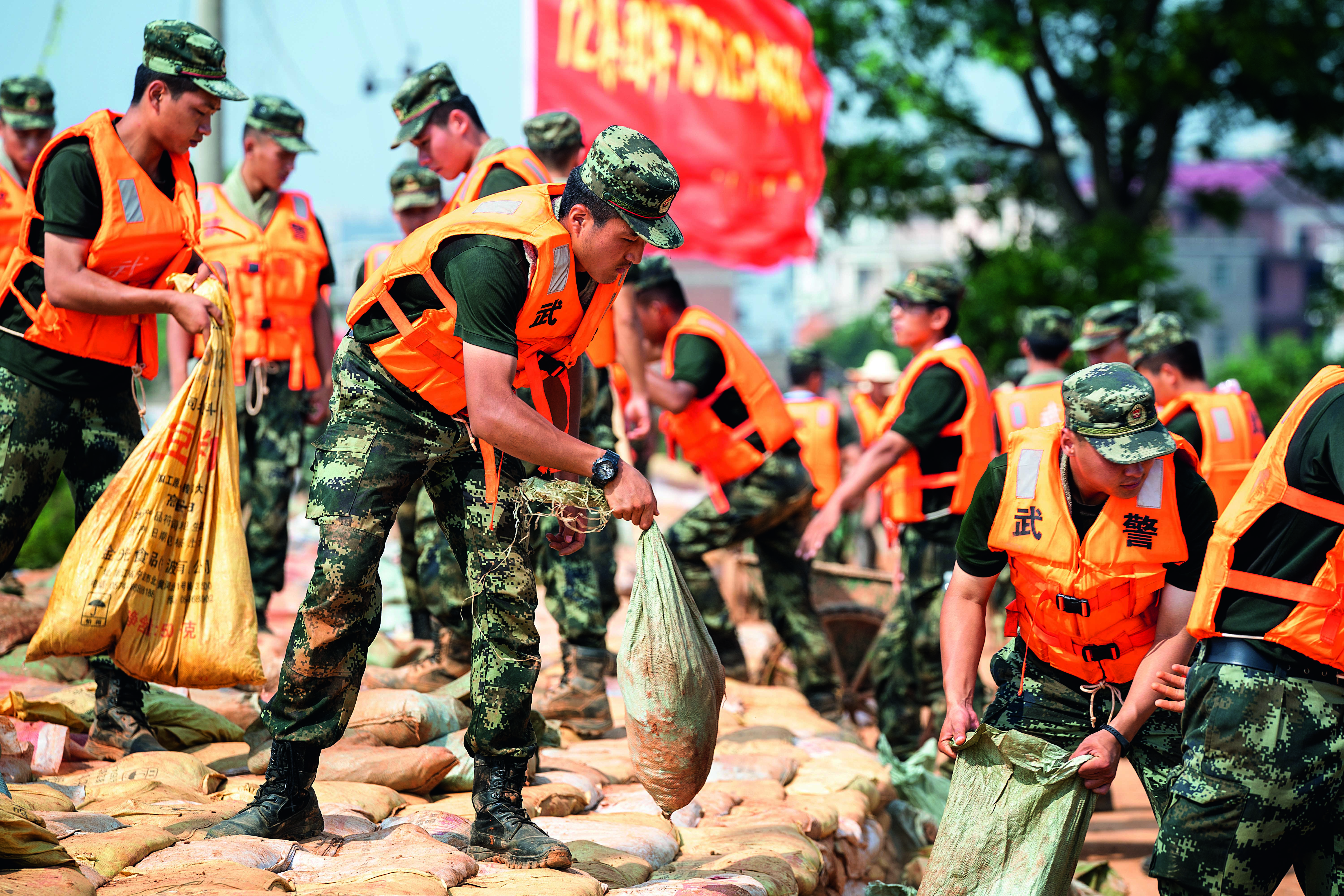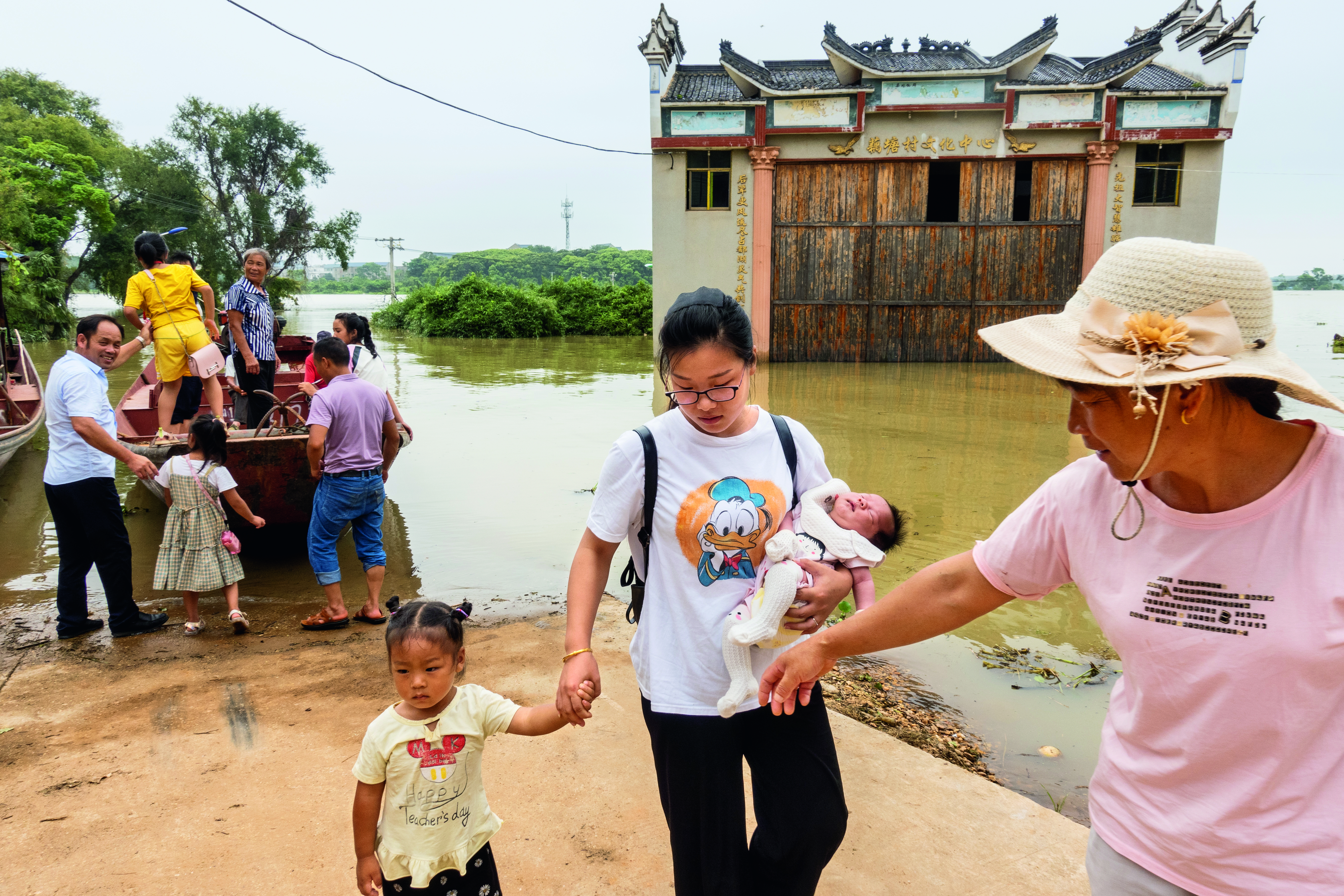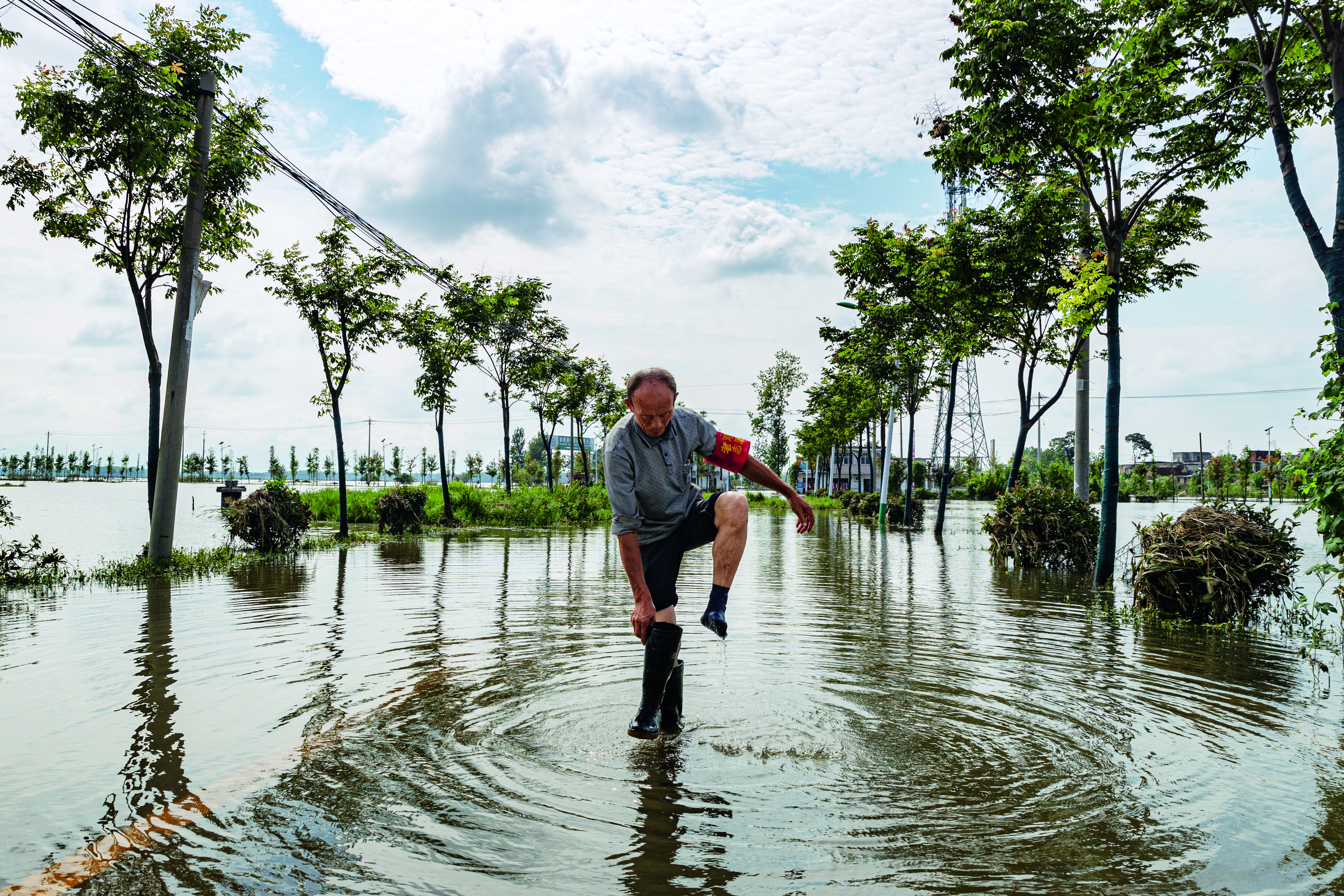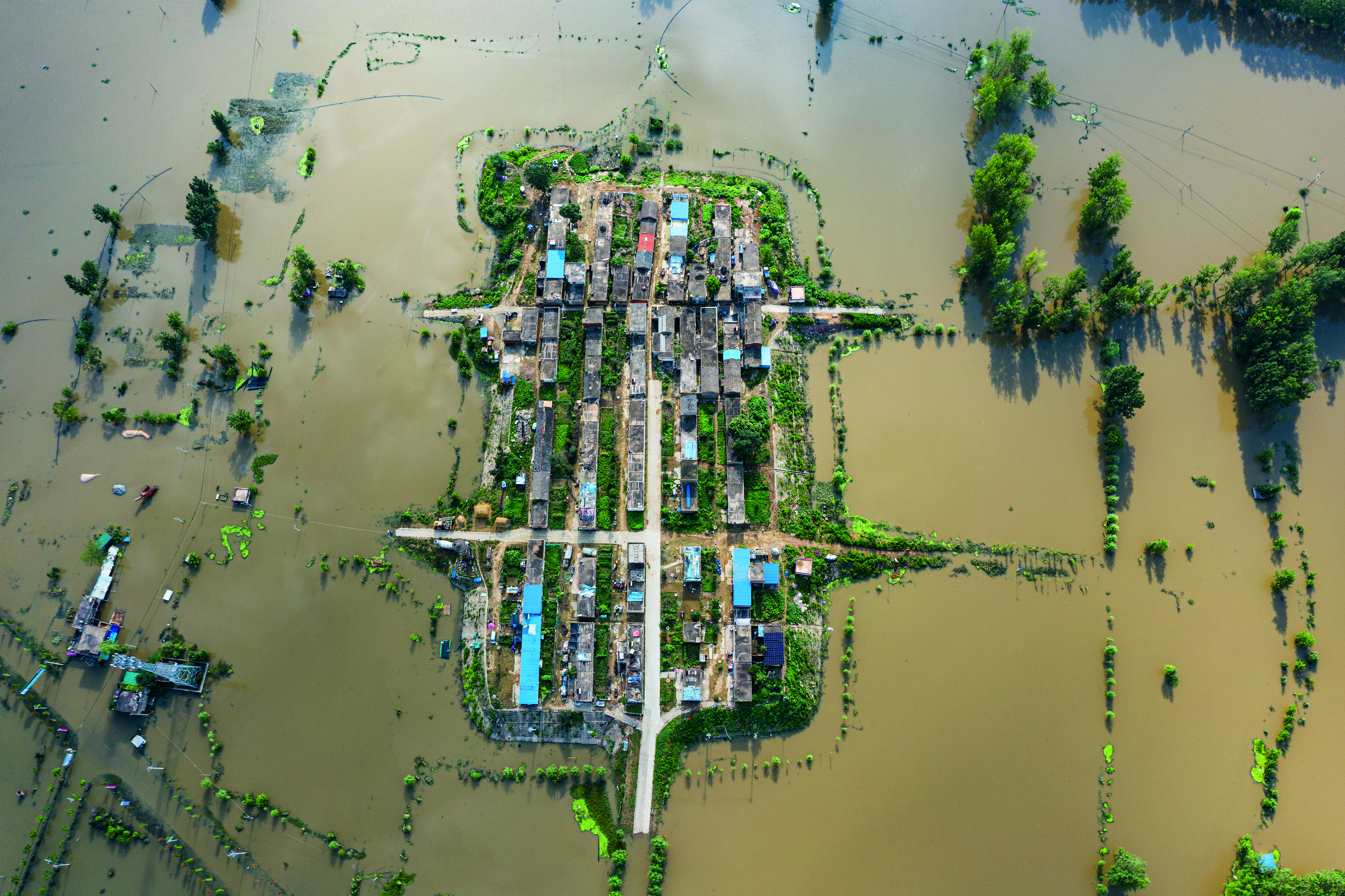Stemming the Tide

With her one-month-old daughter in one arm and her three-year-old in the other, Zhang Jiangyan boarded a ferry, bound for her mother’s home to avoid a flood.
Zhang lives in Longkou Village, Lianhu Township of Poyang County, Jiangxi Province. Recently, continuous heavy downpours and furious upstream waters flooded nearly the entirety of Poyang County, and Longkou Village was not spared. Two-thirds of the village was overwhelmed by floods. Many households were affected, and locals had to evacuate by boat. Due to safety concerns, Zhang decided to take her girls out of the village. The village’s power and roads were cut off, and firefighters from Lishui City, Zhejiang Province, came to rescue and relocate them to higher ground. “The floods were heavy, and the situation was urgent,” Zhang recalled. “But the firefighters made me feel greatly relieved.”

China’s largest freshwater lake, Poyang Lake in eastern Jiangxi Province has seen its water level rise to a record high recently. On July 12, 2020, the water level at the lake’s Xingzi hydrological station exceeded 22.52 meters, breaking the previous record set on August 2, 1998. Located on the east bank of Poyang Lake, Poyang County was threatened greatly. Wuyi Central School, a local primary school on Raozhou Street in the county seat, was converted into the county’s largest temporary relocation site. All of the school’s three teaching buildings were made available to flood victims. About 790 flood victims settled there, most from nearby flood-stricken villages and towns. The local government provided them with toothbrushes, towels and other daily necessities and dispatched cooks to the school to prepare meals.
“Many enterprises and individuals donated materials such as watermelons and instant noodles,” said Hu Liyan, director of Poyang Town Public Complaints and Proposals Administration. “Everyone is doing their part to battle the flood.”
Poyang County was one of the places hardest-hit by floods in China this year. Since mid-June, the total precipitation in southern China has been rising, with torrential rainfalls striking some areas. Hundreds of rivers have seen water levels exceeding warning marks. Southwestern China endured numerous geological disasters and alpine torrents that caused casualties and property losses. The flood prevention and control situation was quite serious. Statistics from China’s Ministry of Water Resources show that since June, the water levels of a total of 433 rivers in China have exceeded the alert mark, with 33 rising to historical highs.
The Chinese government did everything possible as part of rescue and disaster relief efforts. China’s State Flood Control and Drought Relief Headquarters dispatched six ministerial-level working groups led by high-level institutions such as the Ministry of Public Security, the Ministry of Natural Resources, the Ministry of Water Resources, the Ministry of Emergency Management, and the China Meteorological Administration to seven of the hardest-hit areas in Jiangxi, Anhui, Hunan, Hubei, Jiangsu, Zhejiang, and Chongqing to guide the flood prevention and relief work. China’s central government allocated 600 million yuan (US$86 million) to five hard-hit regions to address the adverse impact of natural disasters.
Frequency of river monitoring and downpour forecasting increased. Guidance of flood prevention and control efforts on the Yangtze River and in the Taihu Lake basin was strengthened, and analysis of the risks such as river floods, reservoir accidents, and mountain torrents was performed. Local governments also strengthened the monitoring, forecasting and early warning for geological disasters.

Ordinary Chinese people have exhibited a strong sense of responsibility and great confidence in beating the floods. On the front lines of the fight in Jiangjialing Village of Poyang County, a group of women volunteered to perform flood prevention work including filling sandbags and patrolling the dam. All were well into their fifties and accustomed to spending their spare time on “square dancing.”
In Jiangzhou Township, Jiujiang City, Jiangxi Province, a shortage of labor spurred an email sent from the town to all residents, requesting young people working outside to return to help flood prevention and control efforts. “To all the men and women of Jiangzhou, your hometown now faces a dire flood situation. We are earnestly requesting you to return and help fight the floods.” As of July 14, more than 4,000 Jiangzhou people had answered the call and rushed home to join flood prevention and control efforts.

by Duan Wei/China Pictorial
In Hongshan Village, Honghu City, Hubei Province, it took 12 hours of non-stop drainage work to rescue more than 20 hectares of paddy fields from floods. In Luxi County, Xiangxi Tujia and Miao Autonomous Prefecture, Hunan Province, three young people braved the roaring waters, searching for nearly half an hour to rescue a local trapped in a farmer’s market by a downpour.
Statistics show that by the beginning of July, China had mobilized more than 120 social institutions to work on emergency response in tandem with over 3,500 professional rescue workers and many volunteers from both urban and rural areas. These forces participated in the rescue efforts during downpours and floods in places like Guangxi, Hunan, and Chongqing as well as preparations for and response to typhoon Nuri.